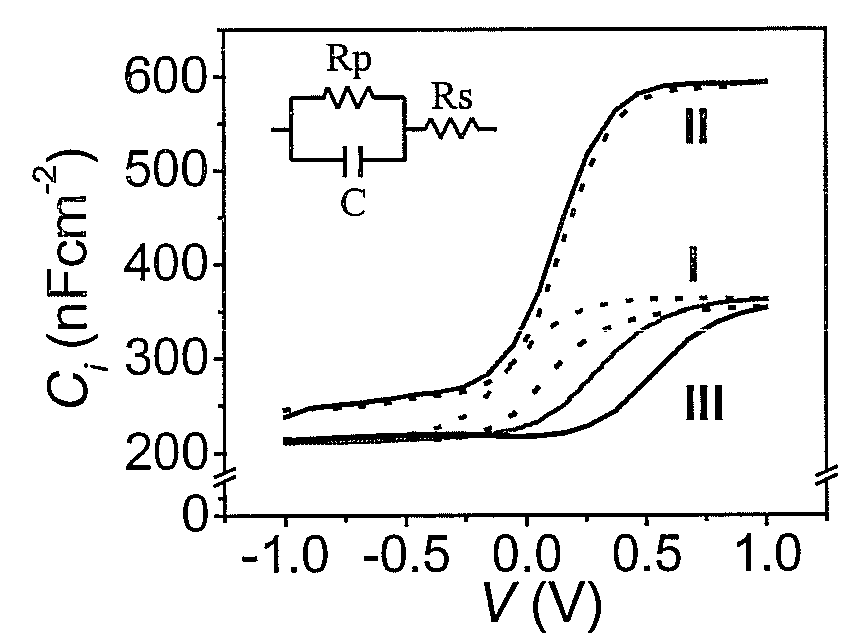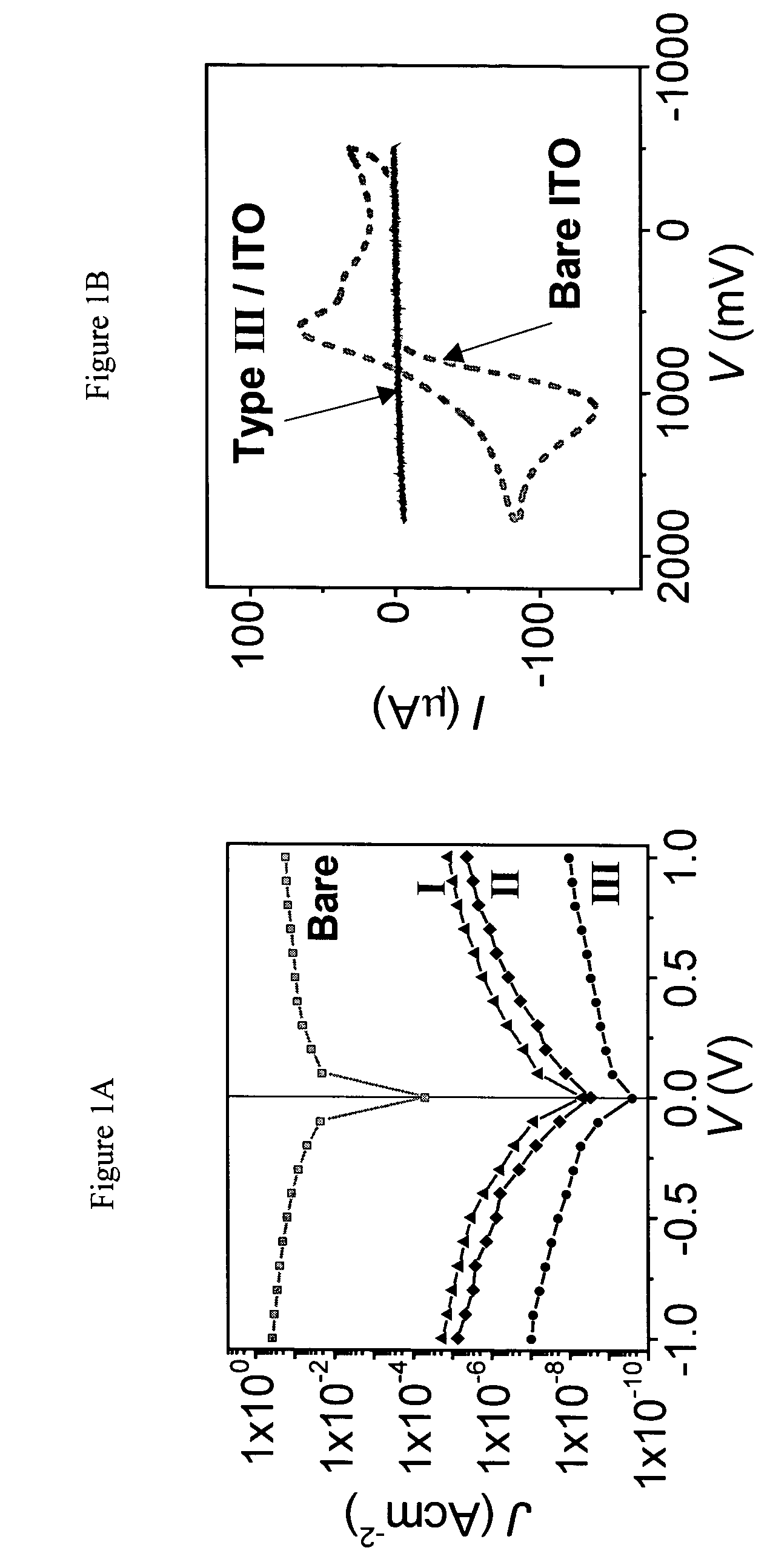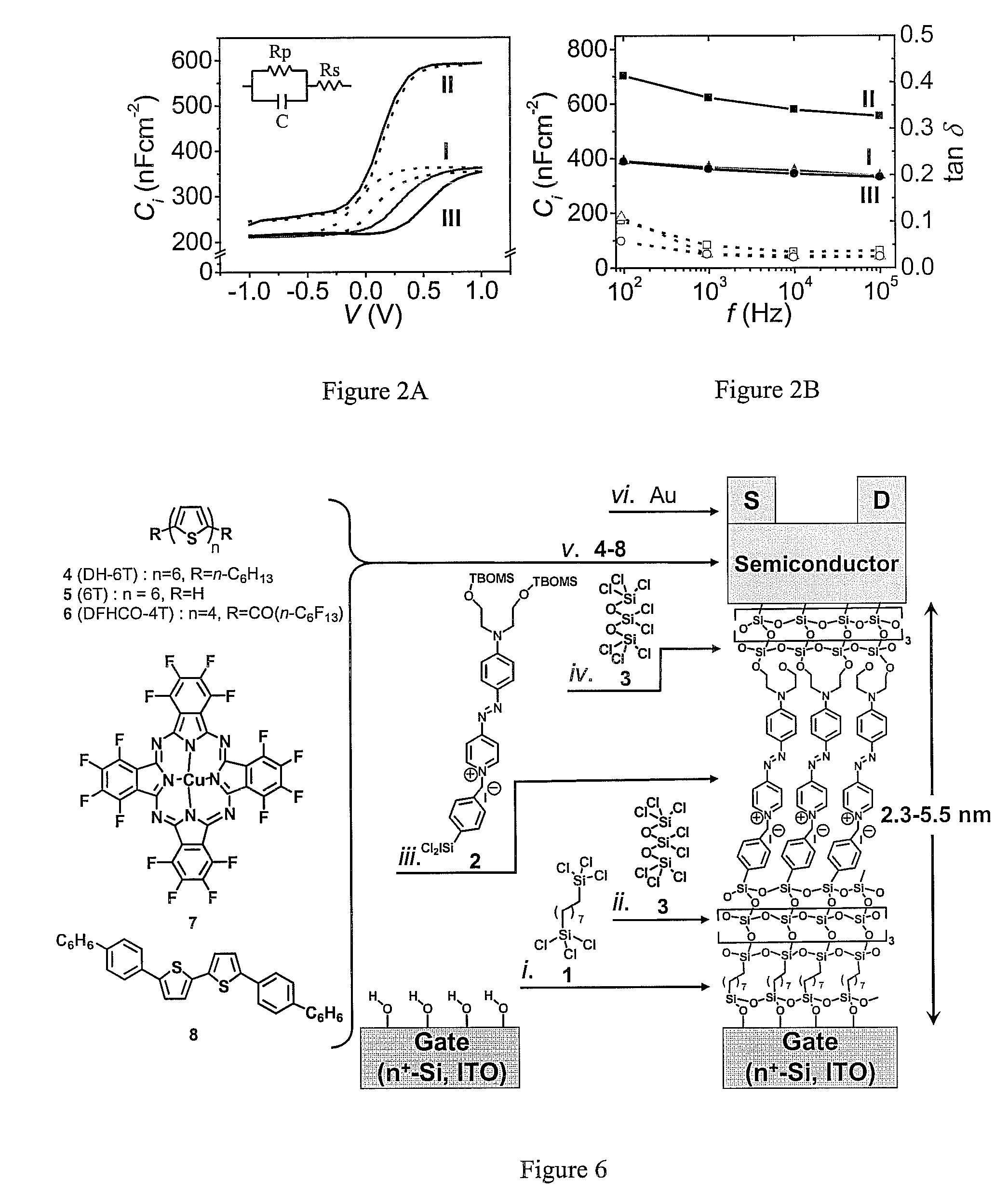Nanoscale self-assembled organic dielectrics for electronic devices
- Summary
- Abstract
- Description
- Claims
- Application Information
AI Technical Summary
Benefits of technology
Problems solved by technology
Method used
Image
Examples
example 1
[0040]The bis-trichlorosilane-functionalized alkyl chain (Cl3Si(CH2)8SiCl3) and octachlorotrisiloxane reagents were purchased from Gelest, and the stilbazonium salt precursor was prepared according to the aforementioned, incorporated patents and a literature procedure. See, also Zhu, P.; vad der Boom, M. E.; Kang, H.; Evmenenko, G.; Dutta, P.; Marks, T. J. Chem. Mater. 2002, 14, 4982 which is incorporated herein by reference in its entirety. Native oxide coated highly n-doped silicon (100) wafers were purchased from Montco Silicon Tech, Spring City, Pa. ITO-coated glass substrates (20Ω / sq; 20-30-Å rms roughness) were purchased from Donnelly Corp. Semiconductor 4 was synthesized and purified by the literature procedure, (Garnier, F.; Yassar, A.; Hajlaoui, R.; Horowitz, G.; Deloffre, F.; Servet, B.; Ries, S.; Alnot, P. J. Am. Chem. Soc. 1993, 115, 8716 (2002), incorporated herein by reference), and new compound 6 was synthesized and characterized by a straightforward methodology. See,...
example 2
[0042]Self-assembly procedure. All silicon wafers were cleaned with RCA solution, milli-Q water, and Piranha solution according to standard procedures and were dried as quickly as possible. For alkyl chain self-assembly, clean, dry wafers were placed in a glass holder and immersed in 1-10 mM solutions of Cl3Si(CH2)8SiCl3 in distilled toluene for 1 h at 0° C. under nitrogen. They were then washed with dry toluene twice and then with acetone. For hydrolysis, coated wafers were then immersed in acetone / water (5:1) for 1 h, then rinsed with acetone and methanol and blown dry with a nitrogen stream. Stilbazonium salt and octachlorotrisiloxane capping layers were deposited by procedures described in the literature, (see, Marks, J. Chem. Mater., 2002) and in the aforementioned incorporated patents.
example 3
[0043]Device fabrication. For TFTs, semiconducting materials (4-7) were vacuum deposited at 2-3×106 Torr (500 Å, 0.2 Å / s) while maintaining the substrate temperature at 60° C. Gold electrodes were then vacuum deposited through shadow masks at 5-6×10−6 Torr (500 Å, 0.5 Å / s). For gold electrodes in MIS structures, the same procedure was employed.
PUM
 Login to View More
Login to View More Abstract
Description
Claims
Application Information
 Login to View More
Login to View More - R&D
- Intellectual Property
- Life Sciences
- Materials
- Tech Scout
- Unparalleled Data Quality
- Higher Quality Content
- 60% Fewer Hallucinations
Browse by: Latest US Patents, China's latest patents, Technical Efficacy Thesaurus, Application Domain, Technology Topic, Popular Technical Reports.
© 2025 PatSnap. All rights reserved.Legal|Privacy policy|Modern Slavery Act Transparency Statement|Sitemap|About US| Contact US: help@patsnap.com



